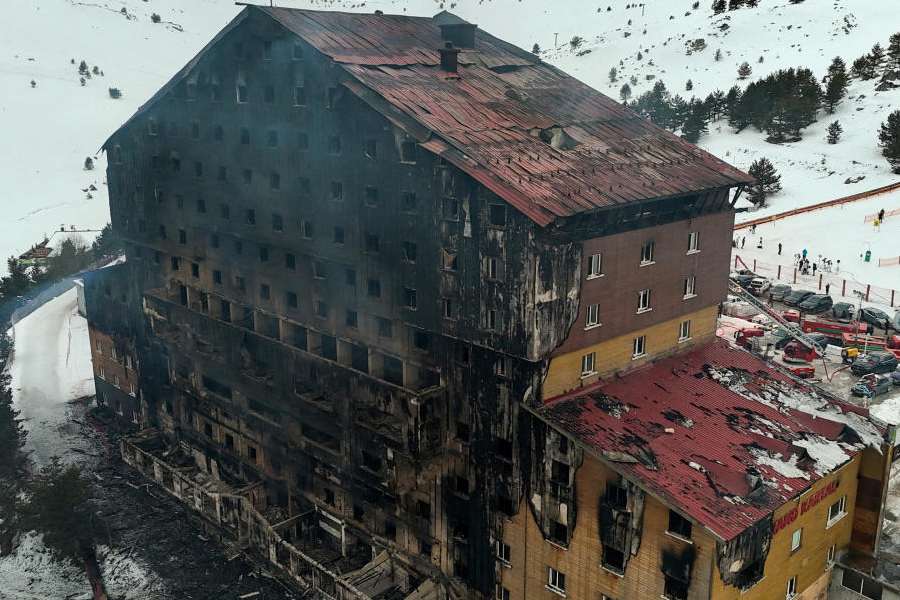 Thursday, 23 January 2025
Thursday, 23 January 2025
 Thursday, 23 January 2025
Thursday, 23 January 2025
In the summer of 2000, Syrians were optimistic. The death of Hafez al-Assad, the country's long-time president, brought his son Bashar to power, marking what many hoped would be a new chapter for Syria. At just 34 years old, Bashar was in stark contrast to his father’s iron rule.
The London educated ophthalmologist was seen as someone who might lead Syria into the 21st century.
What started as a story of hope soon took a dark turn. Over two decades, Bashar al-Assad’s rule would devastate Syria, leading the West to call him a mass murderer.
The heir by accident
As per various reports, the leadership was reserved for Basil, the charismatic and ambitious elder brother, who was a military officer groomed by their father to inherit the presidency. Bashar, in contrast, was the quiet and introvert one, studying medicine in Damascus before moving to London.
Bashar’s life changed in 1994 when Basil died in a car crash. Thrust into the spotlight, their father Hafez al-Assad called Bashar back to Syria and placed him on a crash course in politics and military affairs. In 1998, he was commanding Syrian forces.
Hafez al-Assad’s death in 2000 set the stage for his rise. Parliament amended the constitution, lowering the minimum age for the presidency from 40 to 34, to pave Bashar’s way for ascension.
A doctor’s promise
Bashar’s background as a Western-educated professional made him a symbol of progress, for a younger generation eager for change. Even the Opposition hoped for a change in governance style. Some decisions, such as granting amnesties to long-incarcerated members of the Muslim Brotherhood and reinstating non- government newspapers, made him popular and earned him the moniker “Ataturk of Syria.”
Bashar introduced reforms aimed at modernising Syria’s infrastructure and attracting foreign investment. Shopping malls and luxury hotels began popping up in Damascus and Aleppo, projecting an image of progress.
But inequality was growing. According to critics, much of the wealth generated by these reforms stayed within a small circle of elites, many of them tied to Bashar’s family. His cousin, Rami Makhlouf, became a symbol of this crony capitalism, controlling vast swathes of the economy.
Rural areas suffered from severe poverty and unemployment. Drought pushed farmers into cities, creating slums where resentment brewed. The gap between the rich and poor widened, planting the seeds for future unrest.
In 2001, activists, Opposition members, intellectuals and the regime’s old guard started the Damascus Spring asking for reforms in the Constitution and measures to uplift the economy. What followed next was a government crackdown with arbitrary arrests becoming the norm.
Arab spring and Islamic State
In early 2011, a wave of protests swept the Arab world, from Egypt to Tunisia. It reached Syria too. What began as a small demonstration in the southern city of Deraa spiralled into a nationwide movement. Protesters demanded freedom, an end to corruption, and dignity—basic rights long denied under Assad’s rule.
Bashar offered modest concessions, releasing political prisoners and lifting the country’s decades-old emergency law. But when protests persisted, the regime reverted to violence. Security forces fired on demonstrators, arrests soared, and the streets became battlegrounds.
The protests evolved into an armed uprising as factions of the military defected. By the end of 2011, Syria was embroiled in a civil war, and Bashar’s grip on the country began to unravel.
“We cannot relent in the battle against terrorism…We strike with an iron fist against terrorists who have been brainwashed." Bashar said in 2012 as he blamed foreign hands for the uprising.
In the melee, the Islamic State of Iraq and Syria reared its ugly head.
While some saw Bashar al-Assad as fighting ISIS, many reports suggested he was in cahoots with them.
His regime purchased fuel from ISIS-controlled oil facilities, Syria’s main telecom company operated in ISIS-controlled Raqqa, according to the Time magazine.
Assad wasn’t bombing Raqqa. He was bombing the Nusra Front and Free Syrian Army stronghold. One reason could be ISIS never said they want to see Bashar al-Assad toppled, while the other wanted to see him go.
“The more powerful ISIS grows, the more they are useful for the regime. They make America nervous, and the Americans in turn see the regime as a kind of bulwark against ISIS.” A business person close to Bashar al-Assad's regime told the Time in 2015.

Civil war
Bashar’s tactics grew brutal. Cities were bombed into submission, and the regime faced widespread allegations of war crimes, including the use of chemical weapons. Foreign involvement increased soon after.
Russia and Iran backed Bashar, ensuring his survival with military and financial support. The United States, Turkey, and Gulf nations supported various rebel groups, turning Syria into a battleground for competing interests.
Once-bustling cities like Aleppo and Homs became ghost towns, reduced to rubble. Millions of Syrians fled their homes, creating one of the largest refugee crises in modern history. Entire generations were scarred by violence, displacement, and loss.
An abrupt end
By the early 2020s, international pressure and the relentless toll of the war weakened his regime. Allegations of war crimes mounted, and even his closest allies began to distance themselves.
His departure marked the end of the Assad dynasty, which had ruled Syria for over five decades.
For many Syrians, the scars of his rule will take generations to heal. The end of Bashar al-Assad’s reign may offer a glimmer of hope for Syria’s future, but the path to rebuilding will be long and uncertain.







